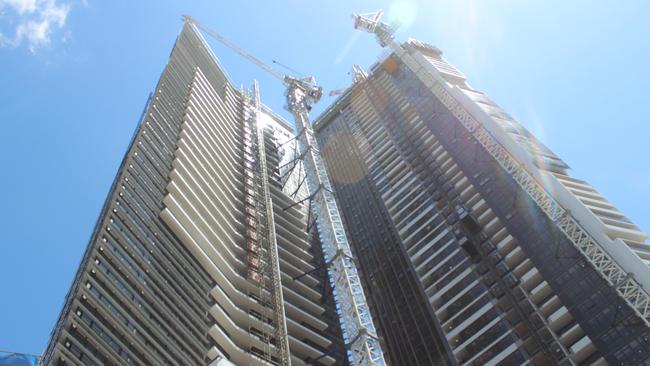
There is an old saying: “Buy bricks and mortar and you will never go wrong”.
Longer term that rule has delivered in major capitals but there can be some very scary experiences along the way.
Nothing illustrates that better than a significant part of the Sydney (yes, Sydney!) residential real estate market, which is down around 20 per cent from the peaks of two or three years ago.
Accordingly what the banking royal commission is doing to the morale and confidence of bank officials suddenly becomes very dangerous
In the long term the royal commission will be good for banks and the community because it will teach more bank executives how to be good bankers---something too many forgot in the long boom.
But in the short term it is creating extreme nervousness among bank staff making loan judgments. They are petrified of making a mistake that will cost them their job. And that nervousness is multiplied by the APRA restrictions. Unless the banks encourage their staff to continue to be bankers we will create a credit squeeze with widespread side effects — exactly what global investment bank UBS is forecasting for Australia.
The part of the Sydney property market that has been ravaged is in inner-city one and two-bedroom apartments. In Melbourne a similar event has taken place but the so-called “sucker” market has masked it. The “suckers” are usually small investors, often superannuation funds, who buy above the market and the selling agent receives an enormous commission.
We can see from overall auction results that the weakness in the inner city small apartment market is spreading to other, but not all, sectors.
A person who bought a one-bedroom inner Sydney apartment at the top of the boom would have paid around $800,000. Today they are watching people buy an equivalent new apartment for around $680,000 — a fall of around 15 per cent. But if that $800,000 buyer wanted to sell their “used” apartment to an investor that investor will not be able to claim deprecation so the price would fall another 5 to 8 per cent so the price might be in the vicinity of $630,000. The original buyer has lost over 20 per cent.
The two-bedroom units have a similar story. From a peak of $1.2 million two or three years ago they are down to $1.05 million as new apartments, and about $950,000 for a “used” apartment.
In Melbourne incredible bargains can be obtained in “used” apartments but any buyer must be careful that the apartment purchased is not clad with flammable material which will have to be removed and no one is sure who will pay for it.
Larger apartments are a better market because people downsizing from spacious houses don’t want a tiny apartment. The developers, encouraged by councils, built too many one and two-bedroom apartments. They did not pick the market change.
The Sydney cottage market has not fallen anywhere near the same amount but it is skidding and forecasts of a 10 per cent decline look possible when compared to what has happened in apartments.
The good news for those sitting on paper losses in Sydney one and two-bedroom apartments is that rentals have not fallen. That shows a strong underlying demand. The combination of lower purchase prices, strong rental demand and low interest rates means that the small inner-city apartment market is now at the point where monthly outlays are reduced if you buy an apartment rather than rent one. (But there is also a market in small low-quality apartments that are cheaper still. That’s a different market). While the sums might work out it’s really hard to get a bank to back a buyer unless they have an enormous deposit and/or income. Meriton offers two-year finance.
Meanwhile building new apartments is not easy because the current lower prices means that the $200,000 in council, regulator and other charges that are imposed on new apartments is now a much bigger percentage of the total.
Lots of land was purchased at what are now totally uneconomic prices. Petrified developers are waiting for the banks to pull the plug but the banks are just as scared so everyone waits and hopes. It’s a stalemate.
If a developer wants to start a block of units the agents are reluctant to sell off the plan for fear the project will not go ahead given the high level of pre-sales required by the banks.
Meriton is one of the few developers that can build because it owns buildings and has its own funding. But Meriton has cut back its long-term new developments and is no longer a buyer of land.
The tougher lending requirements are spreading to the outer suburbs, but that has been an excellent market in both Sydney and Melbourne.
The Chinese banks have become petrified of funding Chinese developers.
Eventually what happens is that the lower levels of building affect the economy and the spending of consumers is affected by the confidence-sapping phenomena of lower dwelling prices.
To restart the game the $200,000-per-apartment set up charges must be reduced and the banks must resume lending, albeit not as imprudently as they did in the boom.
For buyers who can raise the money and either want to live in the apartment or have a suitable tenant, picking the bottom is impossible, but current buyers are buying a long way from the top.



